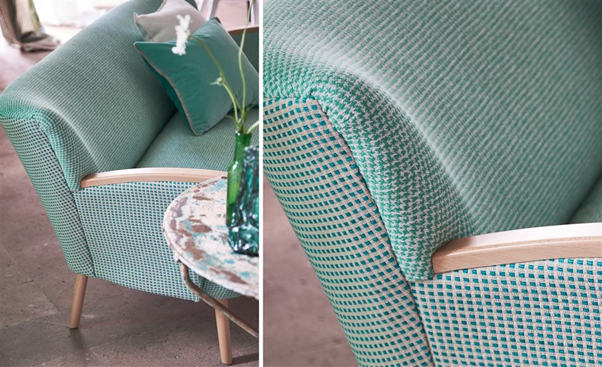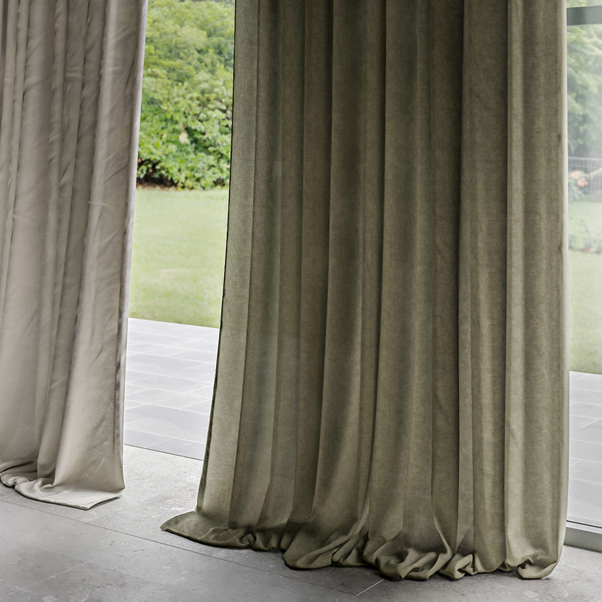Photograph provided by Warwick.
Covid-19 has been a terrible pandemic to the human race, however, due to our global lockdowns, mother nature has taken this opportunity to look after itself again! To see these effects in such a short amount of time, lead me to investigate further and below is my 3rd area of research into whether Interior Design is doing enough to help the environment?
I was interested to know how suppliers of tracks/poles and ornaments/lighting are approaching global warming. I spoke with The Bradley Collection, who advised that all their “products are manufactured from steel and aluminium, which are two of the most recyclable and recycled materials in the world.” Which is wonderful, but I am not sure if they are using recycled products themselves? Porta Romana advised that they have switched from halogen to LED bulbs to energy preservation. They have also taken a look into the 3 core areas of their production and come up with the following procedures which keep quality, whilst being eco-friendly: Within their metalsmiths, they “use materials naturally found on and in the earth, producing pieces forged from mild steel, using repurposed tools”. Their “glass blowers conscientiously maintain the traditional glass blowing process, re-using the glass that remains on a blowers’ pipe, and using tools that have been passed through generations.” And within their ceramics team they use recycled waste heat, water, and excess clay. Finally, in March 2020 they introduced The Upcycling Club, which means they either update or part exchange your old piece, rather than purchasing from new. Along with the above companies, a lot of my other suppliers are also using natural materials and consciously changing the way they do things to be more eco-friendly. However, a grey area for me is how to dispose of these items once they are finished with? Especially within lighting as they may have used the likes of glass or clay, but once it has been wired up, how do you then dispose of it?

Photograph provided by Designers Guild.
Once I had explored the main products of Interior Design, I was interested to see what procedures my suppliers have in place throughout their business. There were 2 areas that EVERY one of my suppliers admitted to actively reducing. Carbon Footprint and Packaging. Since October 2015, when the government started charging the UK for plastic bags in stores, changing the packaging of retail items has transformed. As we saw in part 2, paint tins are made from 50% recycled steel and where possible all packaging has changed to paper or card-based materials across multiple industries. Reducing the Carbon Footprint on delivery/transport is also something they have all looked at reducing. Impressively, Designers Guild have started replacing all their diesel vehicles with electric since 2019 and Warwick’s entire mill is powered by wind turbine energy, which has been CO2 neutral since 2014, amazing! Many companies have moved their mills from the US and China, to Europe and even better the UK. EU’s ecological laws and legislations on the use of hazardous products are incredibly strict and if you do not oblige by them, then it is impossible to obtain a building permit. Wouldn’t it be great if the UK had stricter ruling, as this would reduce the carbon footprint even further?
Another area I was impressed with, was the amount of charity work my suppliers do. Many donate scraps of fabric to a wide variety of charities across the globe. My wallpaper suppliers are part of many tree and land organizations to help protect our wild habitats. Osborne and Little even started recycling the off cuts from their vinyl machines, to make it into astro turn for football pitches.

Photograph provided by Villa Nova.
So, are we doing our bit?
I was incredibly warmed to know that I am working with suppliers who are equally as passionate about this topic as I am. One of the questions that I raise consistently in my research and in these articles is, how do we recycle/dispose of an item once we are finished with them. As mentioned in Part 1, I was mostly impressed by the small business that come and collect the items and dispose of them accordingly for you. But should we all be more knowledgeable in this area and do this ourselves?
I genuinely think that we are doing a lot of things right and I was impressed to hear how a lot of my suppliers have changed their ways to protect the globe, however if the demands for the luxurious look of synthetic fibers is there, then how can we improve the look of natural fibers to give both the luxury we seek, whilst being eco-friendly? Or is this just a step too far?


